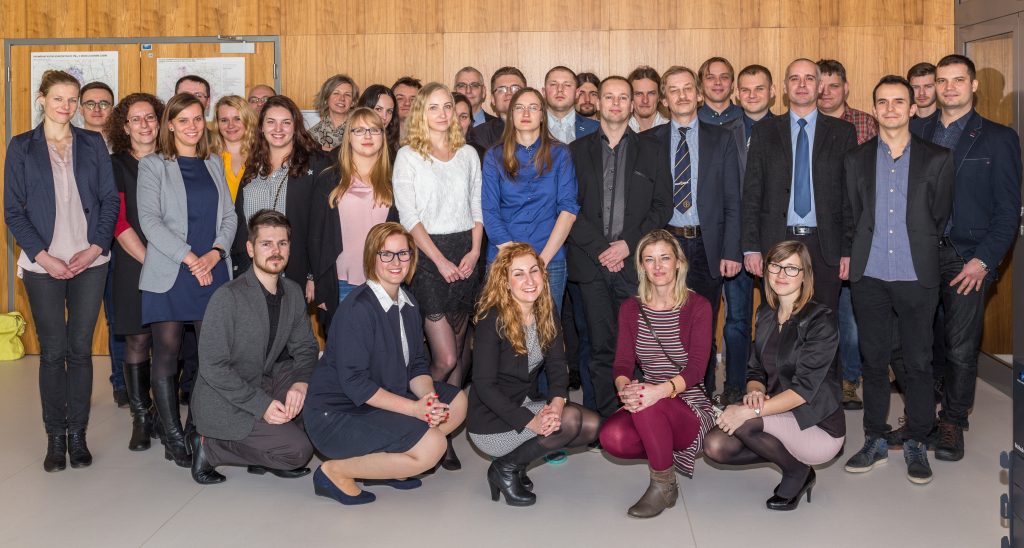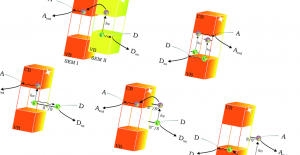Szymon Wojtyła has got his PhD degree. Congratulation!
Reactive molecular oxygen species (1O2 , O3) in heterogenous catalysis
Numerous photocatalytic processes such as degradation of pollutants or organic synthesis occurs with reactive oxygen species, that are formed mainly as an effect of photoinduced charge transfer from excited semiconductor to O2 and H2O molecules. Photocatalytic activation of oxygen may lead to formation of two reactive oxygen species: superoxide radical anion and singlet oxygen. The former one is formed by one-electron reduction of oxygen while singlet oxygen can be generated on two pathways, involving either the electron transfer, generation of O2•- and its oxidation with a hole, or by a direct energy transfer to 3O2 molecule. The goal of this thesis was to study the mechanism and efficiency of singlet oxygen formation from molecular oxygen O2 and ozone O3 in photocatalytic heterogeneous systems. It is more and more discerned that alongside novel photocatalysts developments, understanding of the mechanism of primary photocatalytic processes is crucial for the technological development of photocatalysis. In this context, this thesis focuses on understanding of the mechanisms governing oxygen activation based on photoinduced charge or energy transfer, resulting in singlet oxygen formation. Moreover, a new method of singlet oxygen detection was developed with this work. A series of heterogeneous semiconducting materials has been prepared: neat and silylated or doped TiO2, silicon-based materials, wide band gap semiconductors, such as ZnS, ZnO, NiO, and semiconductors with a narrower band gap, e.g. CdS, Cu2O, Fe2O3. All materials have been characterized using spectroscopic and crystallographic methods. They were tested as photocatalysts of singlet oxygen formation from O2. Moreover, ozone was considered as an alternative substrate for singlet oxygen formation on a photocatalytic way. Obtained results prove that the prepared nanocrystalline materials are active photocatalysts and upon irradiation they are able to generate singlet oxygen based on one or both discussed mechanisms. Si, silylated TiO2, Fe2O3, Cu2O appeard particulary active oxygen photosensitizers. Formation of other reactive oxygen species, such as superoxide anion radical and hydroxyl radical from O2 and O3, has also been studied and discussed. Results and conclusions shine some new light on photocatalytic transformations involving 1O2 and O3.
 Conference
Conference



